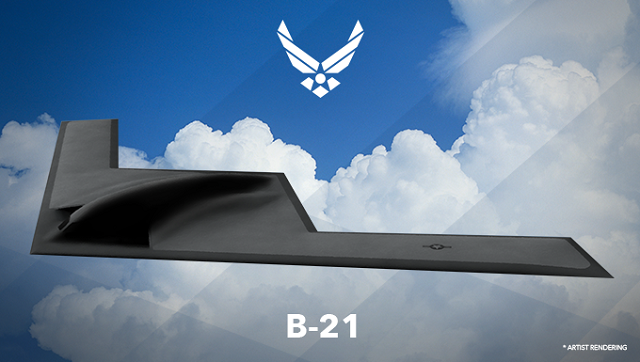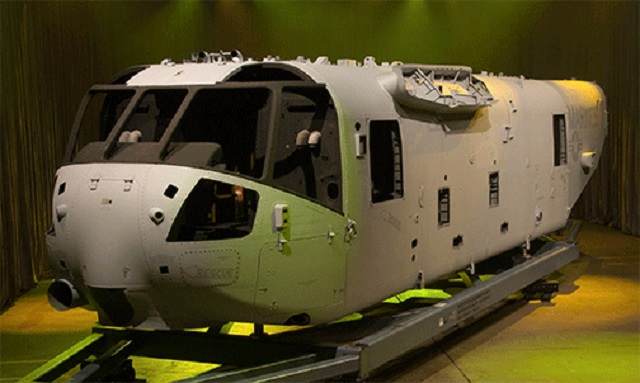The US Air Force has named the seven top-tier suppliers for the Northrop Grumman B-21 bomber, including propulsion system provider Pratt & Whitney.
The East Hartford, Connecticut-based military engines manufacturer owned by United Technologies now powers the US military’s two most advanced combat aircraft: the Lockheed Martin F-35 Lightning II and now-in-development Northrop B-21.
Speaking at the Pentagon on 7 March, USAF secretary Deborah Lee James also named BAE Systems of Nashua, New Hampshire; Spirit Aerosystems of Wichita, Kansas; Orbital ATK of Clearfield, Utah and Dayton, Ohio; Rockwell Collins of Cedar Rapids, Iowa; GKN Aerospace of St Louis, Missouri; and Janicki Industries of Sedro-Woolley, Washington.

US Air Force
The revelation comes ahead of an important congressional hearing on air force modernisation plans, with four key “blue-suit” generals testifying before the Senate Armed Services' airland subcommittee on 8 March. It also comes less than two weeks after James revealed the former Long-Range Strike Bomber’s B-21 designation and an artist’s concept.
Pratt & Whitney’s grasp of the B-21 programme leaves little work for General Electric Aviation; it having stopped work on an alternative F-35 engine with Rolls-Royce, the F136, in 2011.
The B-21’s stealthy, flying-wing predecessor, the Northrop B-2, is powered by four GE F118-100 non-afterburning turbofan engines. The F118 also powers the single-engine Lockheed U-2 Dragon Lady.
GE’s F110 series powers the in-production Lockheed F-16 and Boeing F-15, while the F414 powers the twin-engine Boeing F/A-18 Super Hornet.
GE Aviation's three-stream “adaptive cycle engine” is its hope for the future, and is being readied to power sixth-generation fighter jets. The variable-cycle engine has been matured under the US Air Force Research Laboratory’s adaptive versatile engine technology (ADVENT) and adaptive engine technology development (AETD) programmes.
It completed a preliminary design review in March 2015 and is competing against the Pratt’s alternative under an adaptive engine transition programme (AETP) with an award expected in 2016.
The air force will not say how many engines power the B-21, or provide any details about P&W’s involvement.
Asked about the lack of diversity in the air force’s combat engine supply base, James said: “We’re comfortable with the choices and the strategy that we selected.”

US Marine Corps
P&W might have offered a derivative of the 43,000lb-thrust F135, perhaps a high-thrust version of its PW9000 military engine series that was revealed in 2010.
Spirit AeroSystems, which builds fuselages for the Boeing 737 line and last year delivered the Bell Helicopter V-280 Valor airframe, will likely produce large composite structures for the bomber.
Orbital ATK also has a thriving aerostructures business, delivering sections of the Airbus A350XWB, F-35 and Delta II and IV rockets.
USA-registered BAE Systems Inc. is a leading provider of electronic warfare capabilities, having recently won over Northrop to capture the Boeing F-15 Eagle passive active warning survivability system (EPAWSS) programme.
Rockwell Collins is probably the B-21 avionics providers, while GKN Aerospace supplies “complex, high-performance, high-value components” to the military and commercial aerospace sectors. Janicki Industries is heavily involved in advanced materials development and aerospace prototyping.

Spirit AeroSystems builds Sikorsky CH-53K "King Stallion" airframe sections
Spirit Aerosystems
Asked if the disclosure would put these suppliers at risk of espionage from potential adversaries like Russia and China, James says information protection programmes have been put in place.
“What allows us to tell you this today is that those protection plans are in place,” she says. “Of course, this is why these things remain in the classified world until we’re able to reveal them, to make sure that those protection plans have been developed.
“These are always concerns, and this is the balancing act we have to go through between wanting to be more transparent but also wanting to protect very important data.”
The air force will not nominate an exact initial operational capability (IOC) date for the B-21 except "sometime in the mid-2020s" but it says Northrop will be incentivised to hit cost and schedule targets, with schedule performance being more "heavily weighted".
Source: FlightGlobal.com



















